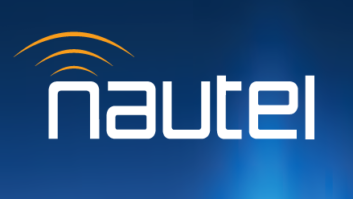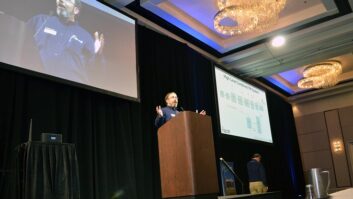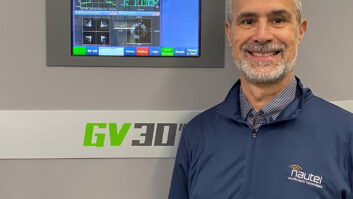Q. What is HD Multiplex?
HD Multiplex is an experimental technology demonstrating a spectrally efficient and energy efficient means to implement all-digital radio utilizing a multiplexed implementation of iBiquity�s Gen 4 HD Radio transmission technology. Three or more IBOC only stations are interleaved in a single transmitter (Fig. 1 below) and a receiver is presented with three or more independent IBOC stations. Using Nautel�s HD Multiplex, up to 15 audio streams or stations can reside within 600kHz of signal bandwidth or up to nine audio streams may be accommodated in 400kHz of signal bandwidth. �
�
�

�
�
Q. How does HD Multiplex place so many stations within a small bandwidth?
�The key concept is that the output of multiple independent IBOC exgine modulators can be combined in a single HD PowerBoost-like crest factor reduction engine (see Fig. 2 �below). This allows a single multiplex of two or more IBOC stations to be amplified using a single transmitter and subsequent antenna system by replacing the FM signal used in hybrid IBOC transmission. This results in an all-digital IBOC configuration capable of carrying up to the 3x the standard IBOC payload, and it can be demonstrated that this multiplex can carry up to 15 audio streams in 600kHz of signal bandwidth. This concept can be extended by adding further sidebands in various permutations. Fig. 1 shows a three-station multiplex based on this concept with the three separate stations marked as A, B and C. The corresponding IBOC sidebands are all spaced standard 200 kHz apart and therefore maintain backward compatibility with existing receivers.
�

�
�
Q. How could the broadcast industry take advantage of Nautel�s HD Multiplex?
�
Potential application areas include:�
� HD Multiplex would address the shortage of available frequencies in the FM band by leveraging the superior spectral efficiency of HD Radio�
� 200+ audio channels could be possible with proper frequency planning
o AM stations could be moved to the FM band as proposed by some countries such as Mexico�
� HD could be added to a station by leasing an audio stream on the multiplex
a. Leasing could be supported via ad insertion not possible using today�s simulcast�
� Netcasters with a large number of audio streams could place the most popular streams on air�
� Sports, specialty and community channels could be added
� HD Radio data service build out could be implemented, such as artist experience, weather and traffic data
a. More data could be allocated, since so much is available
�
Q. Will it work with existing receivers?
�
Yes. The proposed concept is backward compatible since it is built upon existing modulator and receiver technology widely deployed today. Note that this implementation does not utilize the all-digital IBOC modes proposed by iBiquity (MS1-4) which so far are not implemented in broadcast transmitters or receivers. In some configurations receivers are expected to tune in 100 kHz channel spacing with receivers benefitting from HD scan capability, but this is not required.
�
Q. How will HD Multiplex impact Radio?
�
HD Multiplex further enhances the spectral efficiency offered by the IBOC standard by closely frequency-packing multiple stations. With appropriate frequency planning that leverages the superior IBOC D/U ratio of 4-6dB, a radio dial could land on a valid broadcast 50% or more of the time. This can lead to a future offering of 200+ audio streams to a listener in a given market.
�
Q: What degree of FM band spectral efficiency might be possible utilizing Nautel HD Multiplex?
HD Multiplex truly enables the spectral efficiency of HD Radio. IBOC can place up to five audio streams in the 200 kHz frequency partition dedicated to a single FM broadcast. IBOC�s second strength is its superior D/U ratio of only 4-6 dB compared to 20-30dB in FM. This allows much better frequency re-use and short spacing of stations. It may be feasible that a receiver could tune into valid IBOC on 50 percent of the band or more. HD Multiplex further increases the spectral efficiency by packing the IBOC signal and using all the allocated frequency space without any waste. �
�
One example configuration uses 600kHz of bandwidth that interleaves 3 stations A, B and C as shown in Fig. 2 above. Using the established service mode MP3, the effective IBOC bandwidth of 123.2 kbps can be tripled to 369.6 kbps. Using a combination of 32 kbps, 24 kbps and 14 kbps audio streams, it can be demonstrated that up to 15 audio streams can be placed on this multiplex. Of course, fewer audio streams with higher bit rate are possible, as well. It is conceivable that 200+ audio streams could be placed in the FM band for a given market. This demonstrates the spectral efficiency of the all-digital IBOC signal standard.
�
�Q. What is the regulatory status? Can I use it?
�
HD Multiplex is entirely experimental in the U.S. with air trials expected to commence soon. HD Multiplex can co-exist in-band with FM stations and iBiquity-defined all-digital service modes (when available). ��
�
Q What does it take to implement it?
HD Multiplex is exciter technology and will require an exciter upgrade. �Innovation in transmitter design and pre-correction will allow modern IBOC-capable transmitters such as the GV and VSHD series to be used. �It is expected that even existing transmitter installations may be able to make use of this technology.
�
Q. Would I need a bigger transmitter?
�
No, provided your transmitter is IBOC and HD PowerBoost capable. In order to achieve comparable coverage to a FM transmitter, you only need about 60-75 percent of the FM transmitter�s TPO depending on the particular transmitter line.
�
Q. What power levels do I require?
�
Today IBOC achieves comparable coverage to FM at -10 dBc injection. You will only require 3×10 percent of the FM transmitters RMS power. The typical power bill will be cut in half.
�
�
Q When will it be available?
�
Nautel demonstrated a working prototype at NAB 2015 to foster discussion within the broadcast community. Based on the feedback from broadcasters Nautel will assess when and if a full production version of HD Multiplex should be released.
�
Q. How does HD Multiplex relate to Nautel HD PowerBoost?
The heart of the HD Multiplex innovation is the ability to input multiple independent stations into a single peak to average power reduction engine, Nautel HD PowerBoost, in order to peak reduce the entire multiplex. Simply frequency shifting individual IBOC signals, combine them causes excessive signal peaks in the 10 dB range.
�
Q. Why has Nautel developed this technology?
Nautel has been approached by broadcasters around the world wanting to demonstrate the spectral efficiency of HD Radio since the FM band is effectively full.
Nautel developed this technology as an application example of the 4th Generation IBOC systems architecture released by iBiquity. �
�
��
Q. Don�t other all-digital solutions exist? How is this different?
�
No other solutions exist. �HD receivers are only capable of receiving the hybrid IBOC signal standards defined today. The iBiquity all-digital modes are not implemented. The only alternative today is to broadcast the standard IBOC signal and not utilize the 200 kHz dedicated to the FM signal.
�
Q. Do I need an FCC approval?
Experimental authorization only. You may require additional channel bandwidth.
Q. I own a Nautel transmitter; what will I need to do to deploy this technology?
�
HD PowerBoost capable transmitters (NV, GV, and VSHD) can make use of HD Multiplex but will require a future exciter upgrade. Three importers and three exporters are also required.
�
�
Q. How much will HD Multiplex cost?
The current implementation is a prototype version intended to prompt discussion and solicit customer feedback. No pricing or commitment to offer the technology as a product is planned at this time.
�
Q Where can I learn more about the power saving technology?
�
Nautel can send you a copy of the paper presented at the 2015 NAB Radio Engineering Conference. To request a copy of the paper, contact [email protected].
�
�












